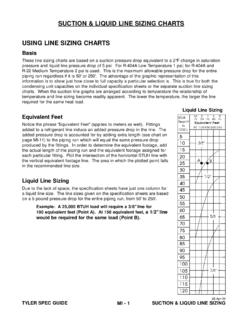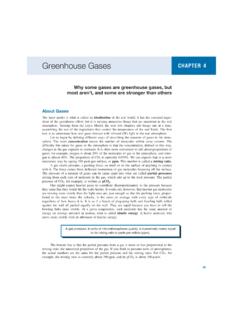Transcription of Mumbai Floods, Reasons and Solutions.
1 International Journal of Scientific and Research Publications, Volume 6, Issue 3, March 2016 224 ISSN 2250-3153 Mumbai floods , Reasons and solutions . Prof. P. T. Kadave, A. D. Kale, Shubham Narwade. Department of CIVIL ENGINEERING, K. K. Wagh Polytechnic, Nashik. Abstract: Our weather is changing rapidly & it is resulting in more and more mega natural disasters like GIANT STORMS, TSUNAMIS, DROUGHTS, floods , etc. the list goes In the same way Mumbai the capital city of the Indian state of Maharashtra, being a low lying and saucer area, gets flooded almost each and every year during rainy seasons and high tides. Being the financial capital of india Mumbai contributes huge losses to the nation s economy, due to the closed downs during floodings. The MCGM has carried out various projects to reduce the floods every year since the havoc caused in 2005, but all in vain.
2 In this paper we have tried to introduce new methods that can reduce the floods and the impact caused by them. I. INTRODUCTION Mumbai is a city located on the coast of Arabian Sea, is said to be the financial capital of india and also the capital city of Indian state of Maharashtra. Being a low lying and saucer area always gets flooded amost each and every year. The heaviest of them was seen on 26th of July, 2016. floods in Mumbai are said to be caused by heavy rains accompanied with high tides but, these are not only the Reasons that contributes to the floods every year various other Reasons accompanied by these are responsible for the heavy flooding in Mumbai . Why Mumbai ? Mumbai as mentioned before is the financial capital of India, these floods cause huge heavy damages to Indian economy along with these they also cause a huge loss of life property and cattle, giving rise to diseases and emotional disturbances for those who survived.
3 A huge amount of money is to be invested for the recovery of the havoc caused by the floods . Further we will be studying about the Reasons for flooding, the effects and the solutions there Reasons for floods in Mumbai . 1. Heavy Rains and Rising Sea Levels: Heavy rains to a magnitude of more than 240 mm are almost of a regular occurrence in Mumbai at the onset of monsoons. However, after the monsoon sets in and moves into its active phase, the situation is conducive to the occurrence of very heavy rains over Mumbai , when they are collectively a result of development of low pressure belt over the sea & as the folks say global warming is causing a intensive rise in sea levels which results in high tides during the monsoons in Mumbai . 2. Extensive Reclamation and Faulty Zoning Regulations: It is evident from the city s planning history, that in the process of housing construction and setting up industries, the waterways that allowed the accumulated rain water to drain out, have been drastically reduced.
4 The reclamation that was carried out originally only to link the seven islands of Mumbai was eventually performed to a greater extent to accommodate the ever burgeoning population of the city Large slum colonies as well as planned constructions are being developed on the land reclaimed from the sea. However, some of this development has extended further to encroach upon the city s existing storm water drains, in order to meet the housing demand of the city s growing population. 3. Faltering Drainage Systems: Mumbai s existing storm water drainage system has largely contributed in the inundation of the city. The city s storm water drainage system is basically a complicated system of simple drains and rivers, creeks, drains and ponds. The network comprises of a hierarchical system of roadside surface drains (about 2,000 km mainly in the suburbs), underground drains and laterals (about 440 km in the island city area), major and minor canals (200 km and 87 km respectively) and over 180 outfalls, which discharge all the surface runoff into the rivers and the Arabian Sea (Adjoining figure).
5 Of these outfalls, some drain directly into the Arabian Sea, while others empty into the Mahim creek, Mahul creek or the Thane Creek. Additionally, some out-falls that drain out storm water from the western suburbs empty directly into sea while the water from the remaining ones is discharged into the Mithi River which ultimately joins the Mahim creek. International Journal of Scientific and Research Publications, Volume 6, Issue 3, March 2016 225 ISSN 2250-3153 4. Mumbai s Natural Drain: Mithi River: The Mithi river constitutes a major component of the city s SWD system. The location of the river is important from the point of view of the city as it serves as a dividing line between the city and its suburbs. Thus, its flooding has direct or indirect repercussions on the disruption of the traffic on the five transport corridors viz. Central Railways, Western Railways, Western Express Highway, Eastern Express Highway & the Harbor Railway line .
6 The storm water drainage of the river is encroached upon by a large number of hutments, storages, processing industries, workshops and scrap yards situated along its banks. These settlements make it difficult even to define the path of the river. Direct discharges of the untreated sewage, wastewater, trash from the unauthorized settlements and industrial effluents flow into the river s course and choke it up, thus raising the level of water during heavy rains. 5. Incapable Storm Water Drains : The storm water drainage system of Mumbai was built largely in the days of the British Rule in 1860, when the population of Mumbai was merely one-tenth of what it is at present. After the initial development, improving the drainage has never been a priority for the government. The system comprises of about 400 km of underground drains and laterals, built on the basis of the population and weather conditions of the times it was constructed in.
7 This antiquated storm water drainage system is capable of handling rain intensity of 25 mm per hour at low tide. If the rain intensity exceeds 25 mm per hour and a high tide occurs, there is always a possibility of inundation. The city s existing drainage system is designed to tackle a rainfall of normal intensity, with the assumption that there are no significant solids deposits in the drains. This is because the slope of the drains is supposedly designed to generate a self-cleaning velocity in the flow and is thus built to keep flooding relatively rare. But the fact is other wise. Most of the drains throughout the city have been found to be occupied by a substantial amount of garbage and other solid deposits. The resulting decrease in the capacity of the city s storm water drainage system has been proved by the disastrous effects of the inundation that hit the city of Mumbai on 26th July 2005. The city was caught unawares and un-prepared to deal with the crisis that followed the floods .
8 It was not in the capacity of the city s drains to let out the excess water. 6. Reduction in the catchment area of Mithi river: The Mithi rivers catchment area being reduced due to extensive reclamation of land contributes a lot towards the flooding along its path. The flooding of Mithi River has direct or indirect repercussions on the disruption of the traffic on the five transport corridors viz. Central Railways, Western Railways, Western Express Highway, Eastern Express Highway & the Harbor Railway line . 7. Bandra - Worli sea link: The construction of Bandra Worli sea link has greatly affected the flooding in Mumbai . It has constricted the mouth of Mithi River at the Mahim bay. So, when the water from the river is discharged into the bay, during the high tides, due to its mouth being constructed the water surges back and overflows from the bank resulting in devastating floods . 8. Path of the Mithi River being changed due to CSIA s runway: The runway for CSIA (Chatrapati Shivaji International Airport) has been elongated over the path of Mithi River which changes its path.
9 So what happens is, when during high rainfall the water runs down with great pressure the water, instead of changing its path it climbs above the land surface and penetrates in the city causing floods . EFFECTS OF floods IN Mumbai 1. A large no of people are stranded on the streets during the rains, thousands lose their houses and properties. 2. Large no of businesses are disturbed, banks are closed down. 3. Stock markets being closed down for almost two days affect the economy of the nation 4. Mumbai being the financial capital of India contributes huge losses to the country s financial development, during the period of flooding. 5. Outbreak of epidemics like Leptospirosis ( a disease caused when organs like skin, eyes, mouth or nose comes in contact with the flood water that has been affected by animal urines). 6. The submergence of the land, results in a destruction of buildings and roads which, in turns, is strictly connected with the rebuilding cost.
10 7. As quite frequently the damaged buildings are sites for business running, the revenue loss in production and industry may contribute, to severe economic detoriation. 8. Repetitive floods may discourage foreign investments from the private sector and therefore weaken the economy. 9. Furthermore, water that covers agricultural lands leads to the damage of crops or even loss of livestock, and the resulting food shortage is responsible for increased food prices. 10. Moreover, inundated areas are inaccessible, unattractive and lack both the utilities and services, and therefore a temporary decline in tourism might occur. 11. A direct contact with contaminated water may trigger water-borne diseases that can make people fall ill. 12. The cost required for reconstruction of the damaged structures is huge. International Journal of Scientific and Research Publications, Volume 6, Issue 3, March 2016 226 ISSN 2250-3153 13. Recovery costs for the affected victims rounds up to nearly ten millions.



















